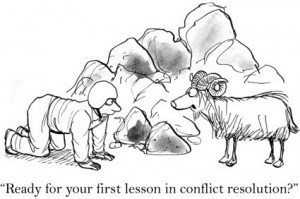Have you ever felt like a referee when you children are fighting over what seems to be such a silly object?
As a parent most of us has gone to the older child who is the most likely to listen to us, therefore ending the conflict the quickest, and asking them to walk away or to give in to the other child? It is easy to understand that this can contribute to the resentment the older child feels for the younger child. Soon the child will grow tired of being the one responsible for resolving the conflict – with the younger child seeming to “win” all of those battles. As Bill Cosby once said, “Parents are not interested in justice, they’re interested in quiet!”
 Families are teams and parents you are the coach. The job of the coach is to set the tone for the family (team) and teach skills that help all the players to get along and for the team to be successful. As Coach we are not allowed to trade our players to another team and we should not pretend that we are doing great when we are not, nor can we hide from the problem at the refreshment stand. As Coach we would like to get the players all on the same page and have good sportsmanship. As the Coach we set the example, teach the skills, and keep some order in the “locker room”. There are times when we need to bench one of the players, but most important is teaching skills to resolve conflict. Check out the Conflict resolution handout.
Families are teams and parents you are the coach. The job of the coach is to set the tone for the family (team) and teach skills that help all the players to get along and for the team to be successful. As Coach we are not allowed to trade our players to another team and we should not pretend that we are doing great when we are not, nor can we hide from the problem at the refreshment stand. As Coach we would like to get the players all on the same page and have good sportsmanship. As the Coach we set the example, teach the skills, and keep some order in the “locker room”. There are times when we need to bench one of the players, but most important is teaching skills to resolve conflict. Check out the Conflict resolution handout.
Virtually all behavior that creates conflict is done so in order to get attention and to fill a need. The four area of needs that we get met when we have conflict and become angry is:
- Attention
- Power struggle
- Revenge
- Learned helplessness
We will discuss all of these in other post’s in the weeks to come.


